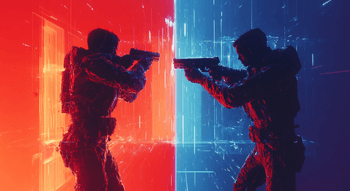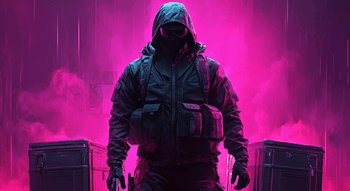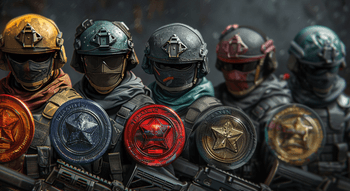CS2 vs Valorant: Differences and Features
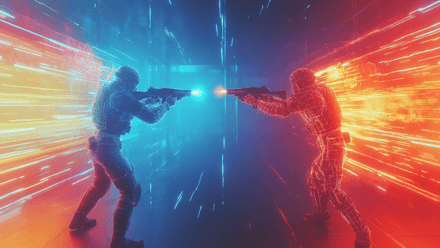
For many years, Counter-Strike was a key esports title with no competitors per se. Well, other team-based FPS games certainly existed, but they either operated in their own niches, like Call of Duty and Battlefield, or tried in vain to occupy the niche of CS. All of the latter eventually died in oblivion after a few years at best. However, 2020 saw the arrival of Valorant, a worthy challenger from the gaming giant Riot Games. Let's push CS vs Valorant head-on and find out which shooter can claim the title of the ultimate FPS.
General Facts About Valorant and CS2
Both games belong to the team-based competitive first-person shooter genre. However, CS2 is the latest installment in a long series of games spanning over two decades. Valorant, on the other hand, is the first iteration of the title, yet it has already become a strong competitor to CS2 and managed to gather an impressive player base. Let's take a closer look at each game.
Valorant
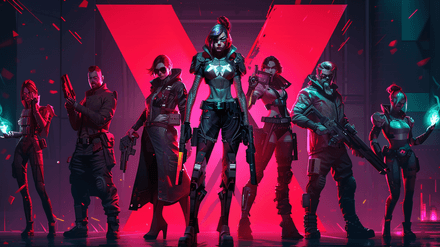
Valorant is a team-based shooter developed by Riot Games, known for the hit MOBA League of Legends. The game was released in 2020. It is based on the idea of taking the gameplay formula from Counter-Strike and mixing in specialized heroes from shooters like Overwatch.
Valorant features two teams of 5 people of unique Agents. Each Agent has their own set of abilities that a player must navigate to outpace their opponents. This approach brings variety to the standard tactical shooter formula and makes team roles far more clear.
Basic facts:
- Released in 2020;
- Shooter with character-based features;
- Teams of 5 people;
- 128-tick servers.
CS2
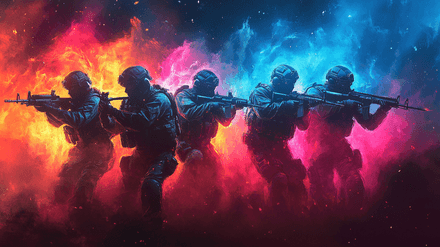
CS2 is the latest version of the world's most popular team-based shooter developed by Valve. The update to CS2 took place in 2023, and had the game ported to a new engine and receive a soft reboot of existing game modes, interface, matchmaking, and several other aspects.
The main features of CS2 are its emphasis on tactics and teamwork and extremely high skill ceiling. Players are free to choose their own style of play and tools to win the match.
Basic facts:
- Released in 2023;
- Classical FPS;
- Teams of 5 people;
- Sub-tick servers.
Valorant vs CS2 Player Count
In the Counter-Strike vs Valorant comparison, the former dominates in terms of number of players. According to the website ActivePlayer.io, the average monthly number of active gamers in CS2 as of 2024 is about 60-80M. At any given time, you can expect to meet about 700K-1M players, so you won't have any problems finding opponents.
However, Valorant also boasts an impressive user base. The average monthly number of active players in Valorant is about 26M. Out of these, the same 700K-1M are usually online. Riot Games has made sure the shooter has a loyal player base by making it multiplatform, while CS2 is available only on PC.
Gameplay Comparison

Core Mechanics
In terms of core mechanics, Valorant and CS2 are both very similar and very different. The main difference is that Valorant is more casual and beginner-friendly, while CS2 encourages its players to train and excel. For example, shooting in CS2 is all about taking your target out with just several initial shots. If you fail to do so, recoil and bullet spread will simply prevent you from hitting the enemy. In Valorant, the shooting mechanics are simplified and take far fewer factors into account.
Another example is the player movement. In CS2, you have to plan your movements carefully, have perfect control over your character, and generally keep your head down from around the corner. Valorant allows much more dynamic gameplay due to the agent abilities.
CS2 vs Valorant Graphics Comparison
When it comes to visuals, Valorant vs Counter-Strike 2 is a battle of two design philosophies. CS2 is more brutal and tries to be as realistic as the engine allows. As a result, all the game’s models, weapons, maps, and special effects feel natural. The only deviation from this rule is the colorful skins, which occasionally stand out against the background of other elements.
Valorant takes the opposite approach — it is deliberately unrealistic and bright. The characters have unique, detailed models, and the battlefield is always full of colorful special effects. Weapon models can also look completely cartoonish, like a miniature dragon instead of a rifle.
Tactical vs Ability-Based Play
The key CS2 vs Valorant gameplay differences lie in how the games handle the player role systems. CS2 is faithful to the traditions of team-based competitive FPS:
- There is a team of 5 people;
- Everyone on this team has the same characteristics;
- Each team member can take absolutely any weapon and play any role they wish, whether it is a captain or a sniper.
- The opposing teams are identical, save for a couple of exclusive guns for each side.
The emphasis here is on tactical decisions, coherence, teamwork, and, of course, accurate shooting and grenade throwing.
Valorant’s approach is fundamentally different. There are agents with unique skills which determine the player’s role in their team. Some are better in one-on-one battles because of their ability to throw high-damage fireballs, some can act as a tank or support, etc. You still need to act cohesively and shoot accurately, but with the introduction of diverse and impactful skills, gameplay becomes much more dynamic.
Weapons
This may be the most crucial point in the Valorant vs CS2 comparison. While CS2 tries to stick to realism, the weapon models in Valorant are rather detached from reality. Nevertheless, any CS2 player will immediately understand what functions each weapon has. It is enough just to look at the massive sniper rifle Operator to realize that it is an AWP analog. In essence, most of the weapons are direct analogs of guns in CS2 hidden under funny names.
In total, there are 17 guns and 7 main types of weapons in Valorant:
- Sidearms/Pistols;
- SMGs;
- Rifles;
- Shotguns;
- Sniper Rifles;
- Machine Guns;
- Melee.
However, in this round of the Valorant vs CS2 battle, the former isn’t even close to being a winner. CS2 has as many as 34 weapons, and if you count different types of knives, it will be 53. Still, the basic weapon types are pretty similar:
- Pistols;
- Rifles;
- SMGs;
- Heavy;
- Knives.
Customization and Economy
When a game is free-to-play, there must be a way to monetize it, and as industry experience shows, the only way to do this without annoying players is to sell good cosmetics. Both CS2 and Valorant players can buy skins, but even in this case, the differences between Valorant and CS2 are quite significant.
So, the system of getting skins in CS2 is quite familiar to most gamers. A player can get skins in several ways:
- Weekly Drops. Skin can be obtained for free every week simply by level-up.
- Cases. After buying a key, the player can open a case and get a random skin from the available skin pool.
- Markets. Players can buy and sell skins in the official Steam Community Market or on third-party sites.
- Trade-Up Contracts. Players can craft one uncommon skin from 10 common ones, with the same being true for rare, mythical, etc.
In CS2, skins are available for all firearms, knives, and gloves. As a rule, the skin is purely a texture, while the shape of the weapon does not change. Players are free to customize the skin with stickers, which can affect its cost.
Skins in CS2 have several levels of rarity:
- Common: Consumer Grade, Base Grade.
- Uncommon: Industrial Grade.
- Rare: Mil-Spec, High Grade.
- Mythical: Restricted, Remarkable.
- Legendary: Classified, Exotic.
- Ancient: Covert, Extraordinary.
- Exceedingly Rare: Rare Special, Gloves, Knives.
- Immortal: Contraband.
The higher the level, the higher the cost you can expect. The price can also be affected by the degree of wear and tear visible on the skin, as well as the presence of a StatTrak kill counter.
In Valorant, the system is slightly different. You can get skins as follows:
- Gameplay. Players can get skins by completing Agent Contracts and daily missions.
- Battle Pass. By purchasing a Battle Pass, a player can get exclusive skins from a pool of 13 weapons.
- In-Game Shop. Players can simply buy their favorite skins in the in-game store.
- Night market. The Night Market is a cool addition to the regular store. Here, you can buy skins at a random discount.
Unlike CS2 in Valorant, skins can change the weapon model, not just the texture or pattern. The same Valorant skin can have several different color schemes for the same model. In addition, skins can be upgraded, unlocking new animations and finishers for them.
There are several skin tiers in Valorant:
- Select;
- Deluxe;
- Premium;
- Ultra;
- Exclusive.
The logic here is the same as in CS2: the higher the tier, the higher the price.
Esports Scene: CS2 vs Valorant

Counter-Strike has evolved naturally from LAN matches to a major cybersport discipline over the two decades of its existence. Valorant, on the other hand, was created with large-scale events in mind, and has a more straightforward tournament system.
There are a few large tournaments, and Riot Games is almost always involved in their organization:
- International leagues;
- China league;
- Valorant masters;
- Valorant champions.
In the case of Counter-Strike, things are a bit more confusing. There are many independent championships that are organized by third-party cybersport organizations. Additionally, there are Valve-sponsors Majors, which are considered the main CS2 championships. Significant CS2 tournaments include:
- Major Championships;
- BLAST Premier;
- IEM Katowice;
- DreamHack Winter;
- ESL Pro League;
- CCT Global Finals.
Conclusion
When comparing Valorant vs Counter-Strike, there is one important point to keep in mind. All of the similarities and differences in Valorant or CS2 are intentional.
Riot Games tried to pull the same trick here as they did with League of Legends, the direct and perhaps the most successful competitor of Valve's Dota 2. The studio took the gameplay formula, simplified some mechanics, changed or added some details, and bet on a colorful visual style. And it worked! Those who, for one reason or another, did not like Dota 2 but liked the genre of MOBA often felt more comfortable in LoL.
So, is Valorant better than CS2? Of course not, as the matter is one of personal taste. Do you like the colorful and deliberately unrealistic visual style and/or want varied gameplay and several characters with different abilities? Welcome to Valorant, then. However, if you prefer a more serious and realistic visual style, an emphasis on tactics and teamwork, and more focus on pure personal skill, you'll enjoy CS2 more.
The best solution would be to just download both games and play either when your heart tells you to. After all, the main thing in video games is to have fun!
